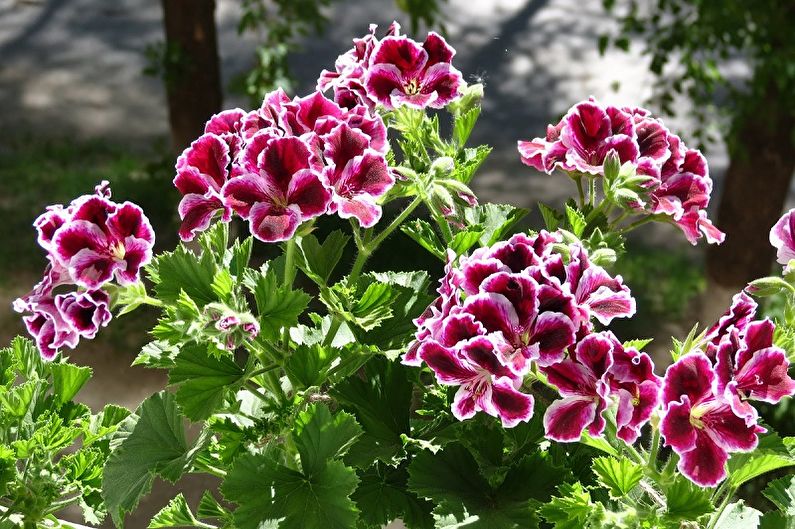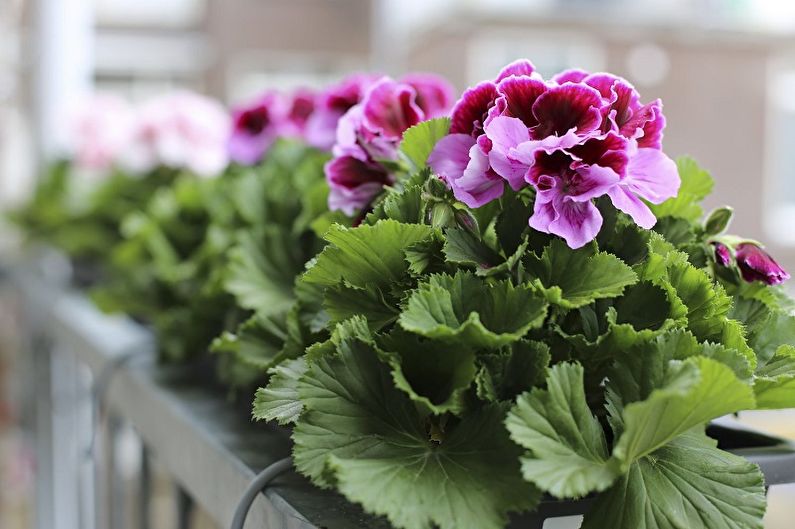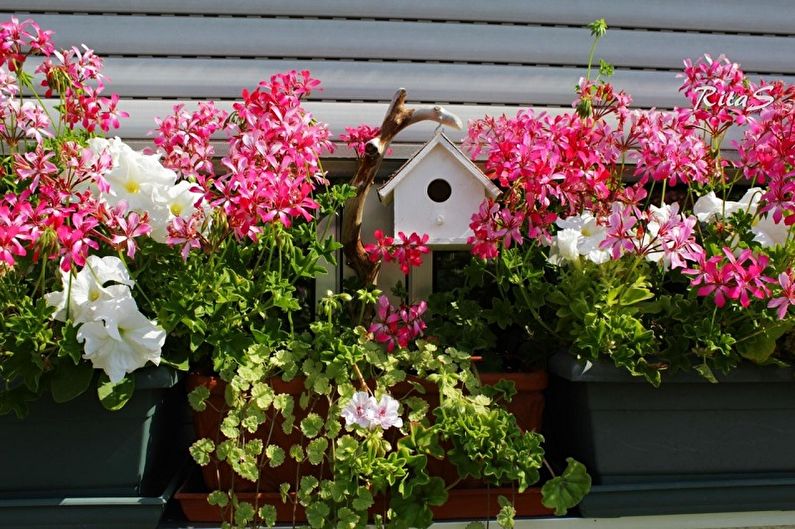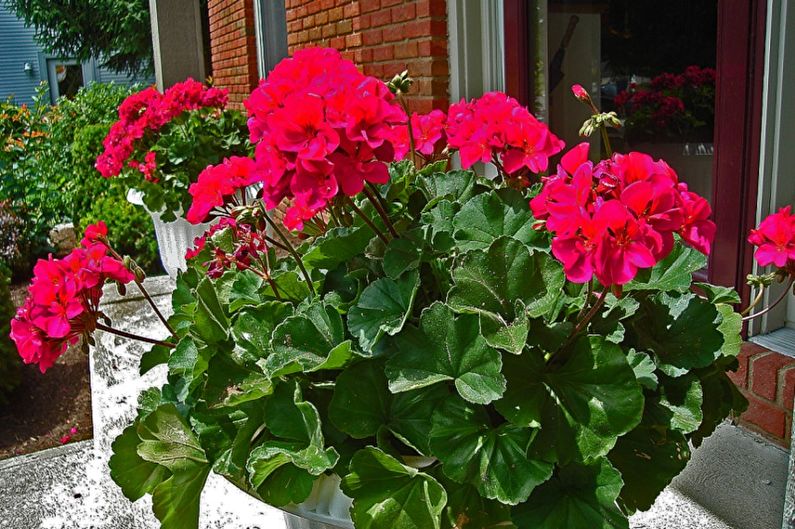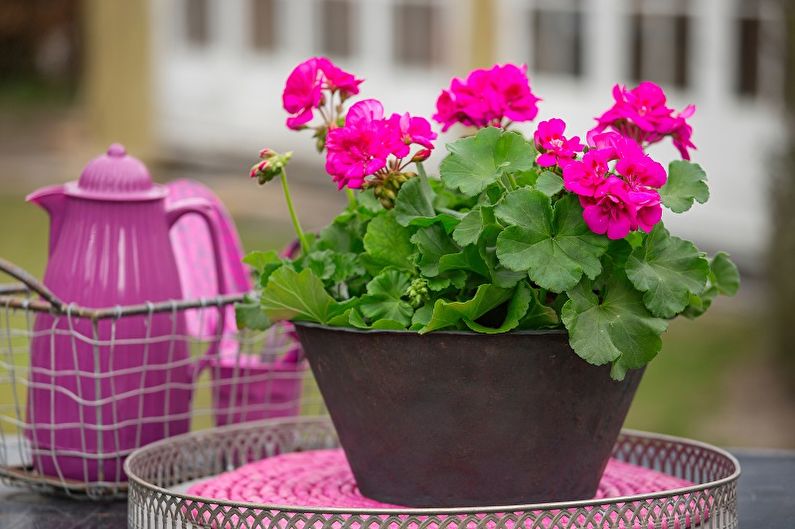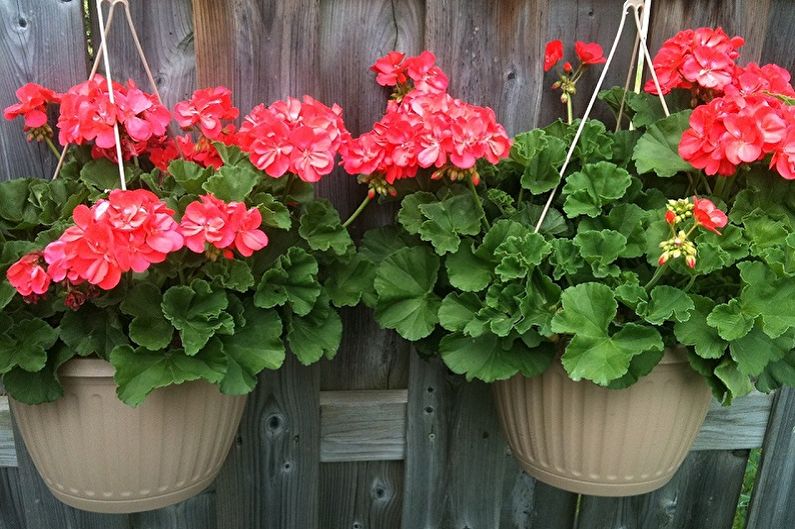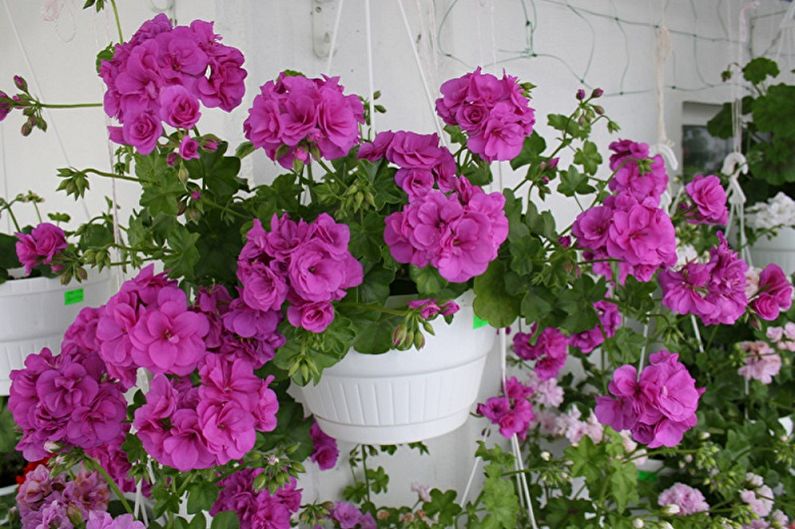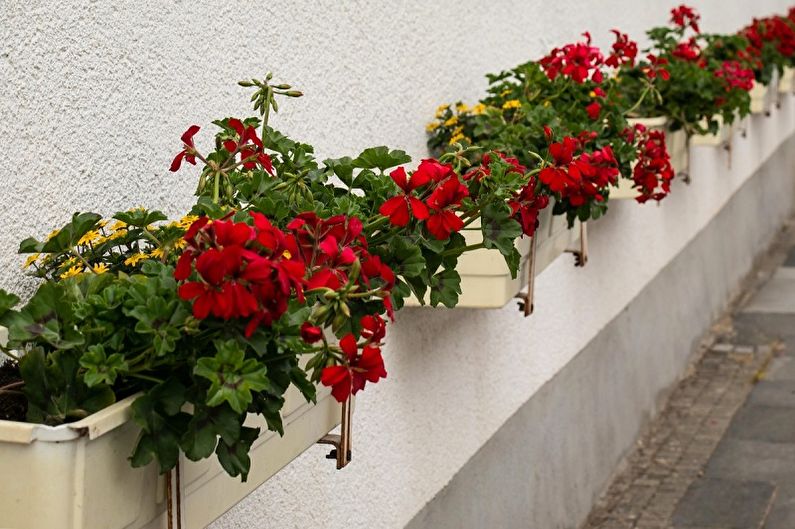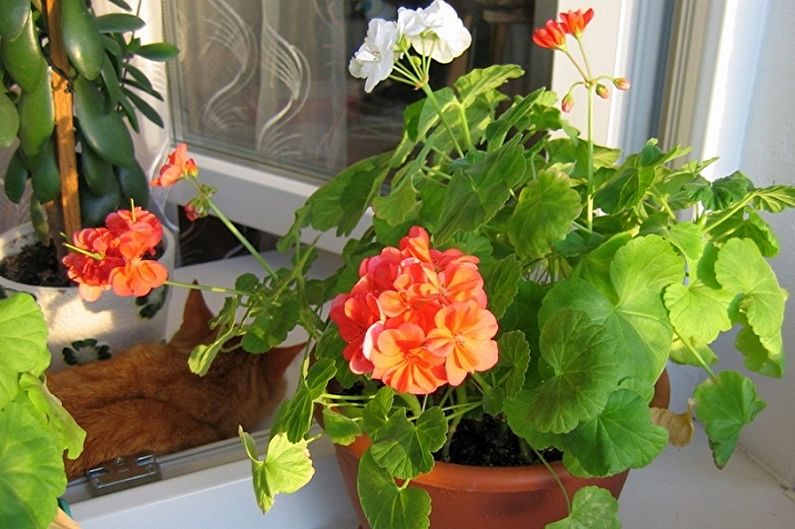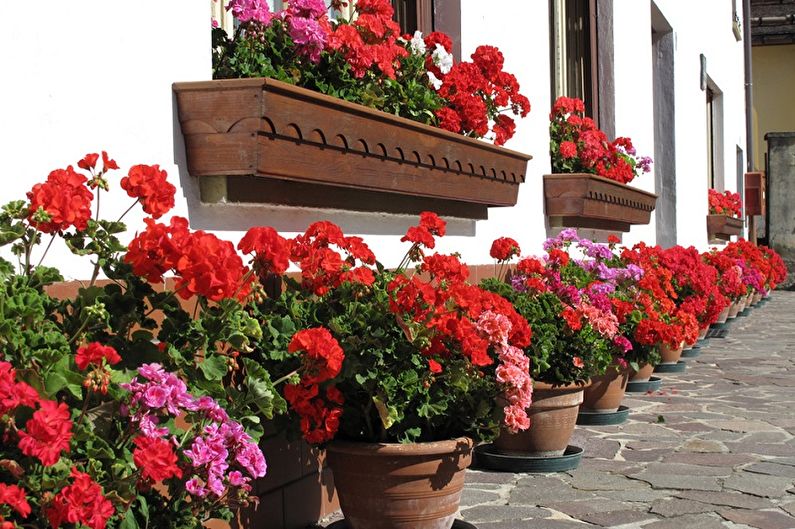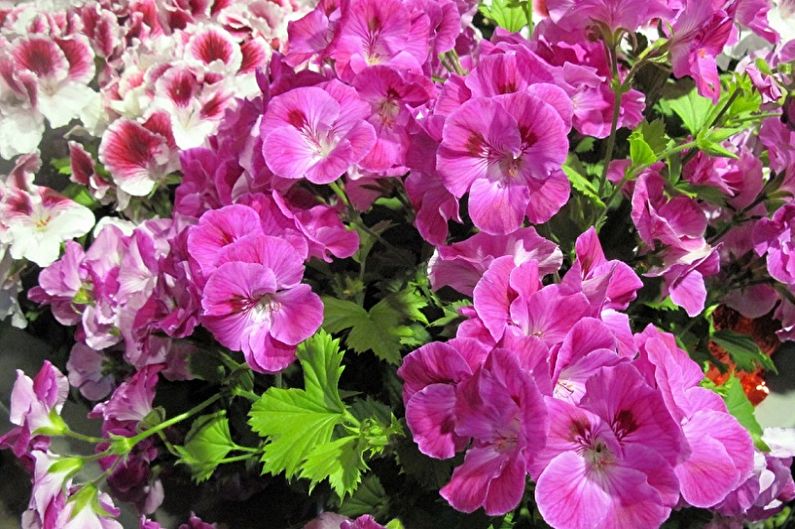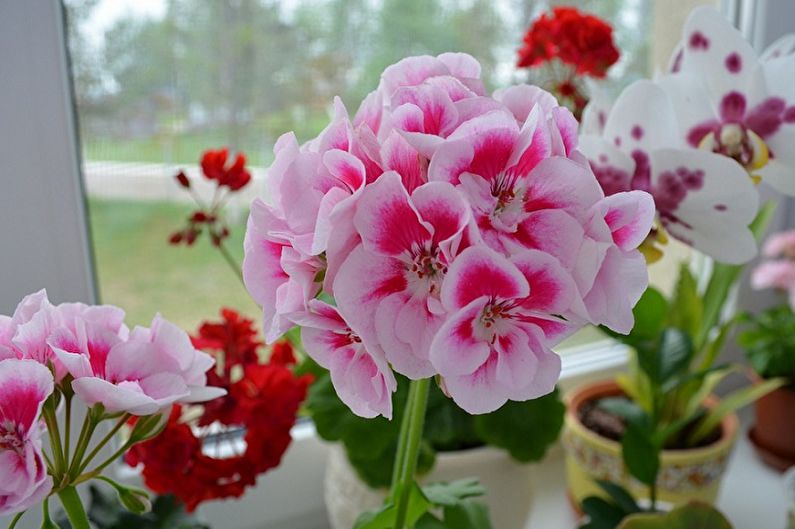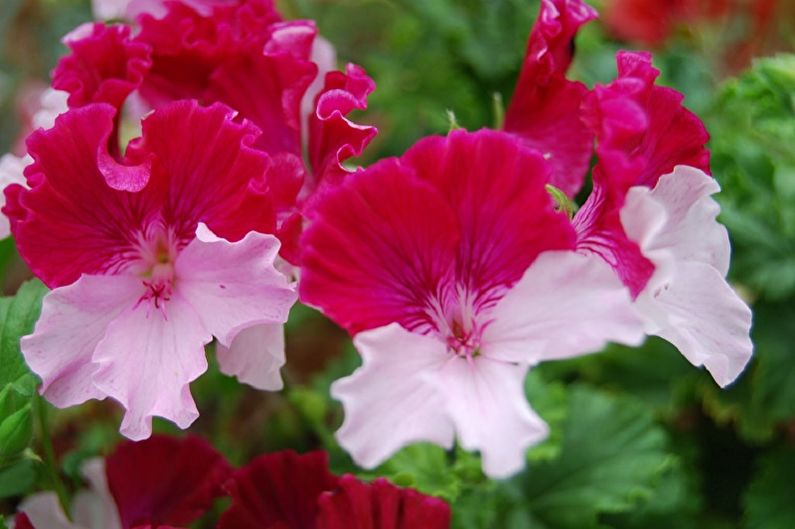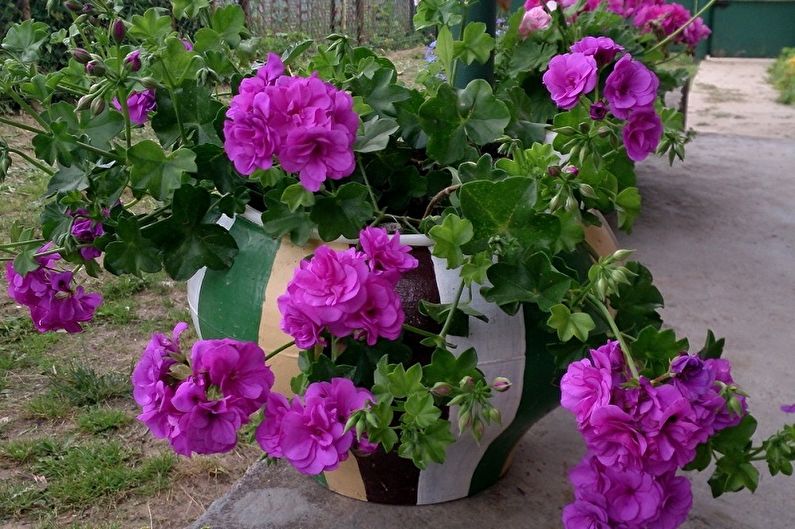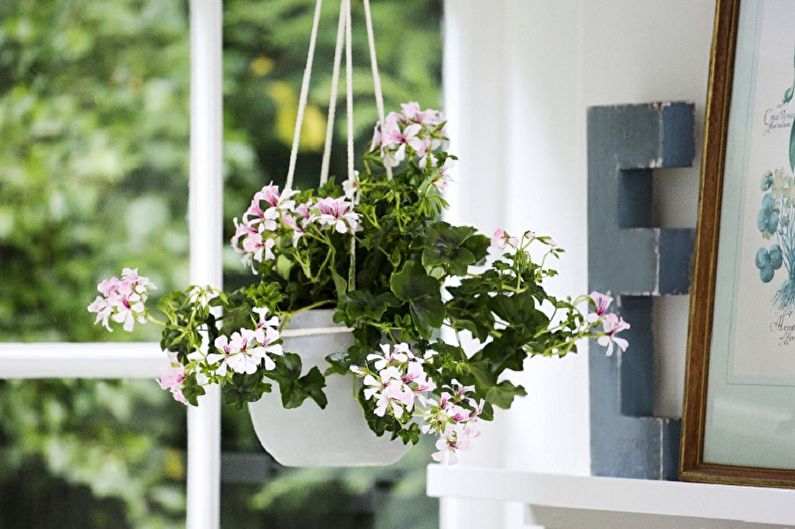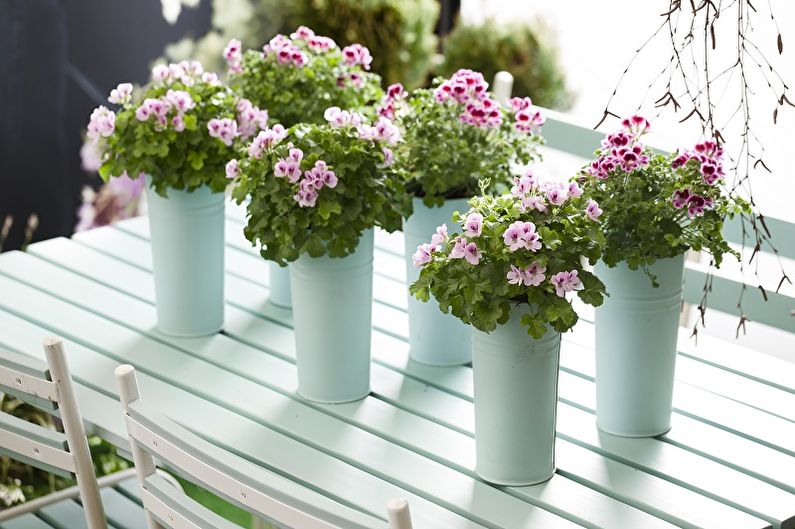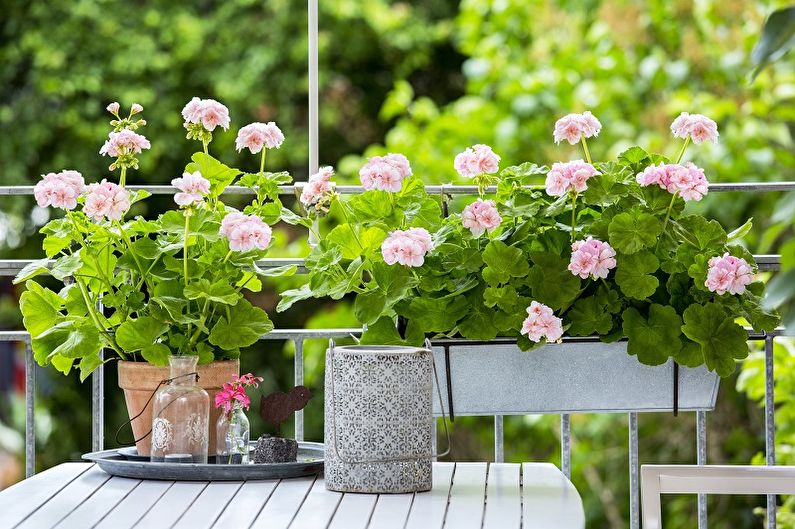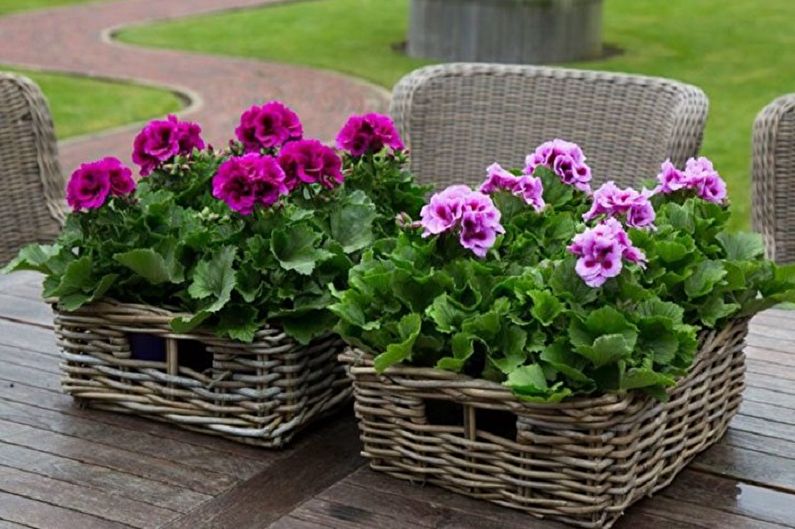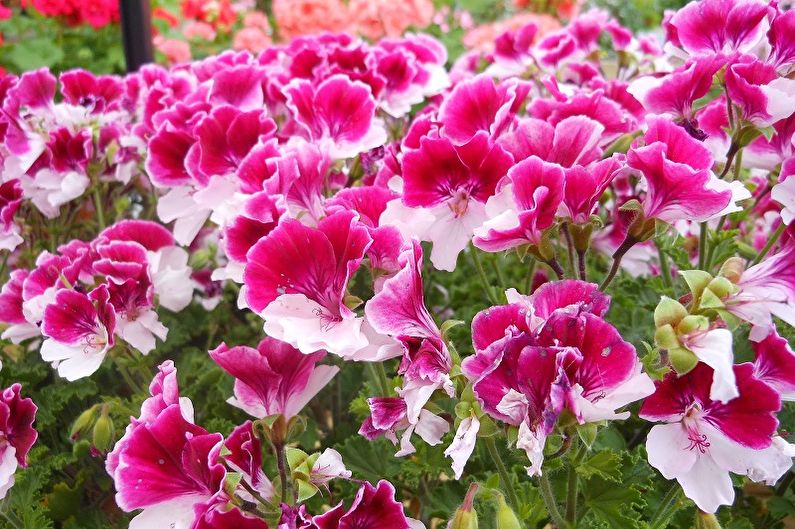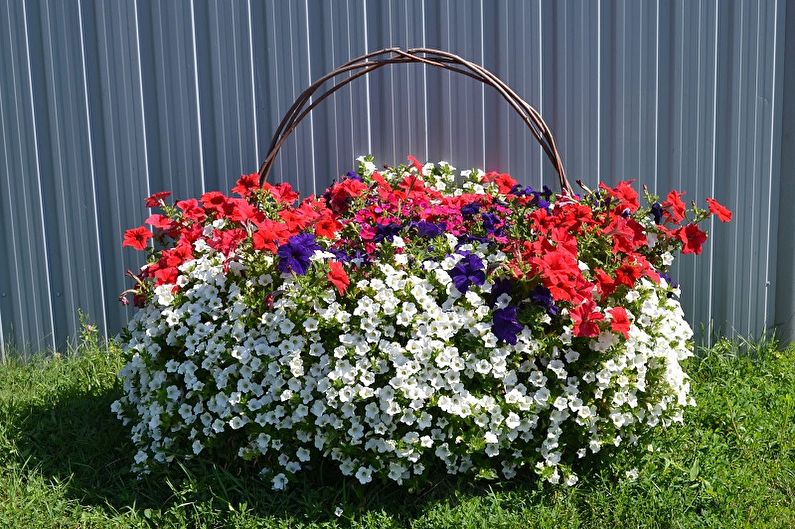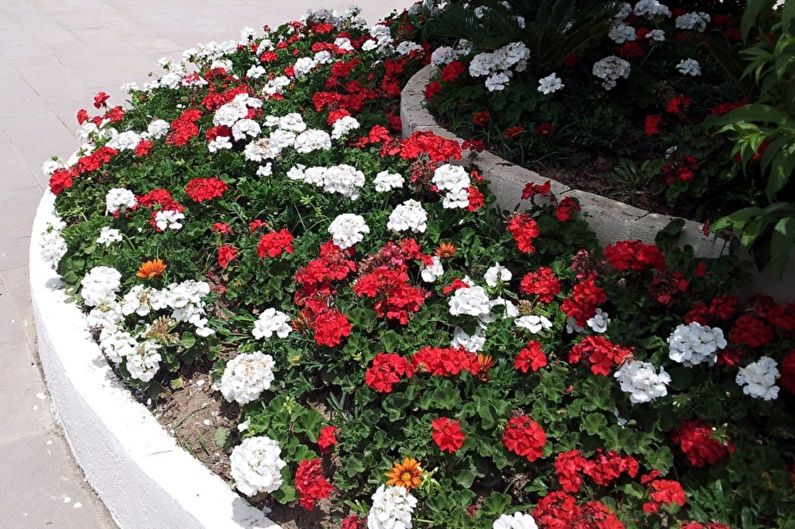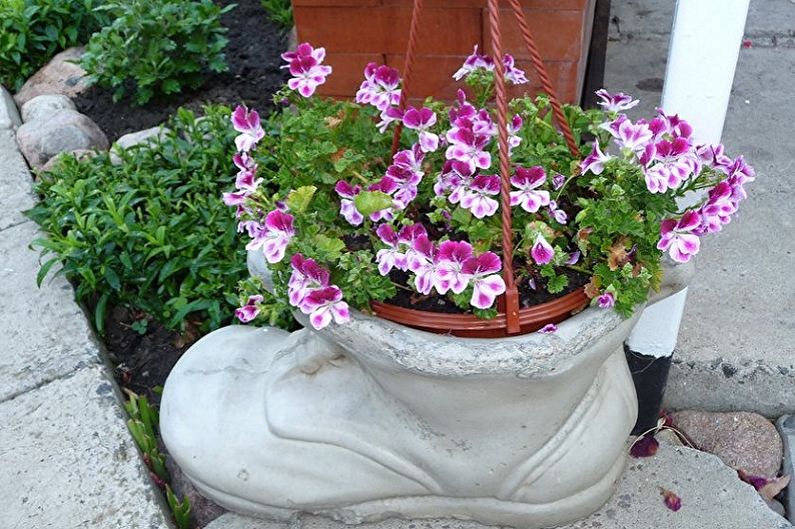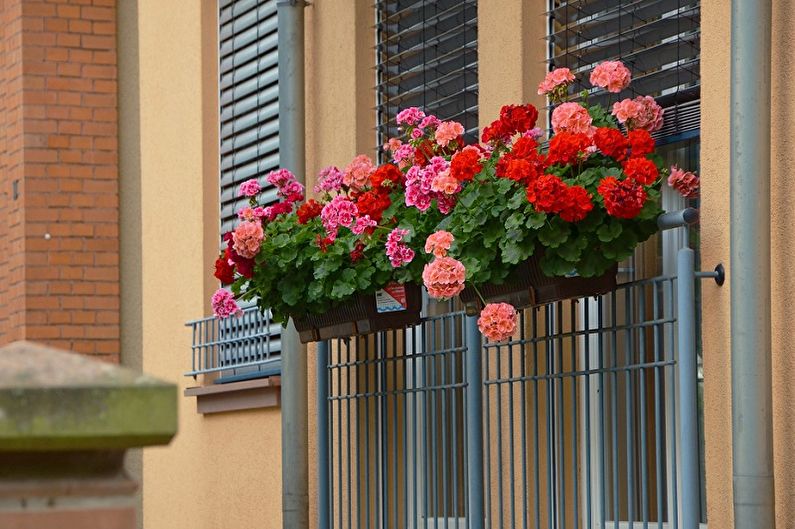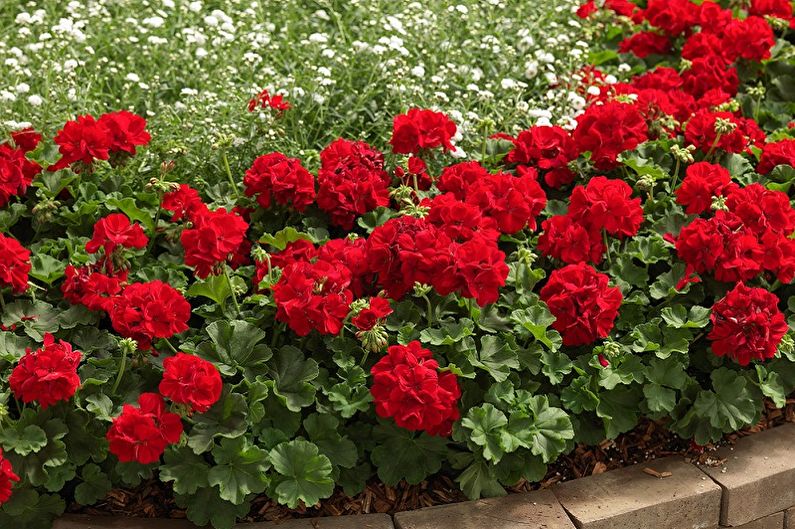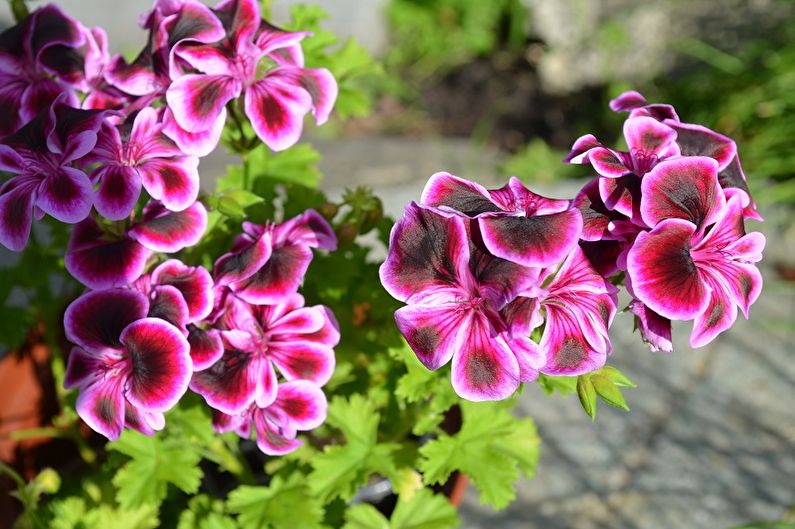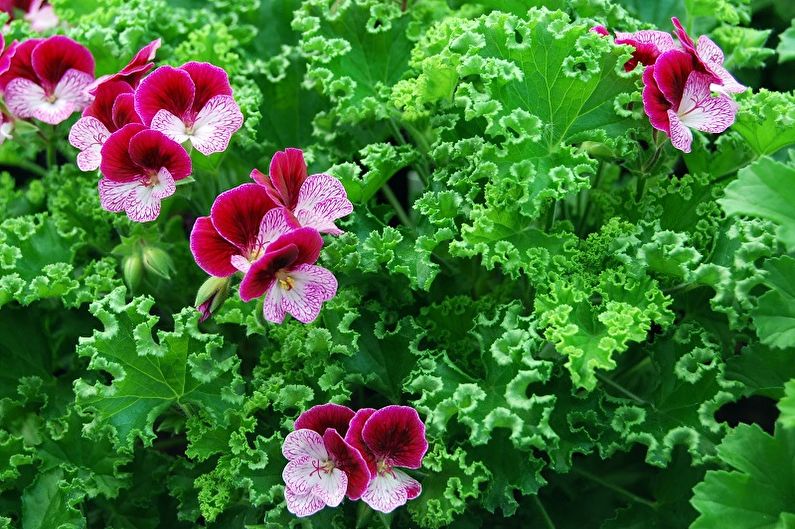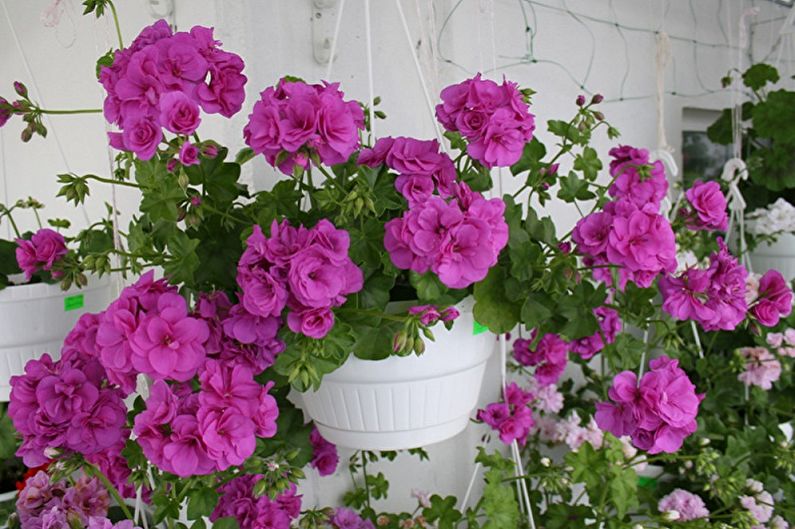
Pelargonium is the very geranium known to everyone. That is why some breed pelargonium at home, not even knowing what it really is. From Greek, the name of the flower is translated as "crane". It became popular in England in the 19th century and has since spread to other countries of the world. Geranium is elegant and beautiful, and caring for it is as simple as possible even for inexperienced gardeners. Another feature is its pronounced smell due to the high content of essential oils. For the same reason, pelargonium is often used in folk medicine. In the country, it allows you to get rid of some garden pests with one of its presence.
General characteristics
Pelargonium is a perennial herb that belongs to the Geranium family. Sometimes there are also semi-shrub varieties. Due to the diversity of species, it is practically impossible to distinguish common features that are characteristic of all representatives. The stems can be creeping, straight or branched, leaves - simple, dissected or palmate, flowers in inflorescences-umbrellas - of any size, shape and shade.
Pelargonium comes from South Africa, so it reproduces well in greenhouses, loves the sun and copes with a lack of moisture. For the same reason, she will not survive the cold winter in the open ground. For propagation, cuttings and seeds are used.
Geranium essential oil is made from the leaves of pelargonium. Root extract is used for the manufacture of medicines, in particular for the treatment of infectious diseases. Some varieties are toxic to pollinating insects due to the presence of quisgalic acid in the composition.
Pelargonium is a universal plant that is planted on the site, in the flower beds and in the house.
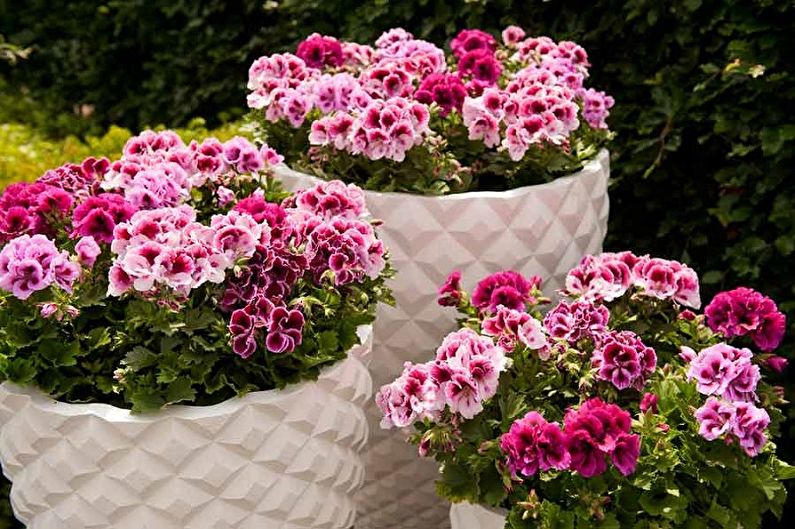
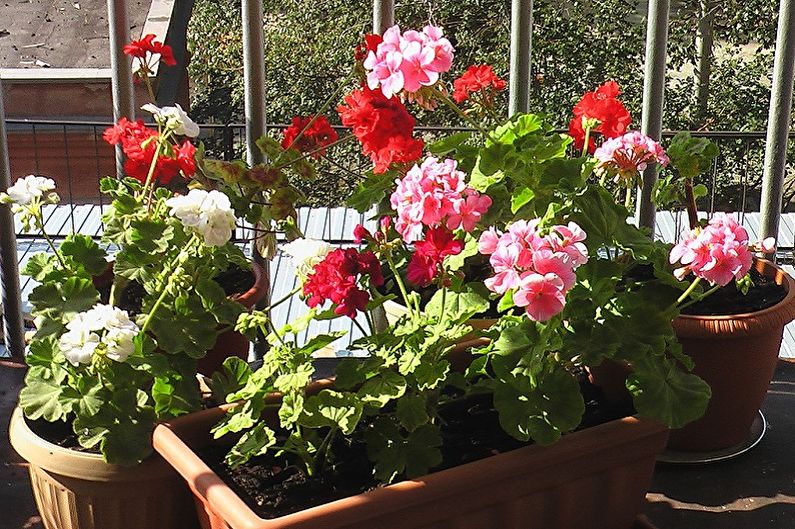
Types of Pelargonium
In nature, there are many types of pelargonium, because of which it is impossible to create a single and universal classification. Most often, six main categories are distinguished: zonal, ivy, fragrant, royal, unique and pelargonium angels. They differ in appearance, habitat and living conditions.
Zone Pelargonium
This is the most common species, which has tens of thousands of varieties. He owes his name to a certain color of the sheet: in the center there is a plot painted in a different color. Sometimes this zone disappears with a lack of lighting, and in the spring it reappears.
Zonal pelargonium is a straight dense bush with pubescent fragrant leaves. It has been grown in culture for more than three centuries. All varieties are divided into 5-petal non-terry, 6–8-petal semi-double and 8-petal terry.
The most famous and large subgroups are pink, tulip, clove, star, cactus and "deacons".

Ivy pelargonium
They differ in creeping or hanging long shoots up to a meter. Such varieties are used to cover the soil, when decorating balconies and loggias. Flowers - of any shape and shade, but the leaves are smooth and resembling ivy, mostly dense and hard.
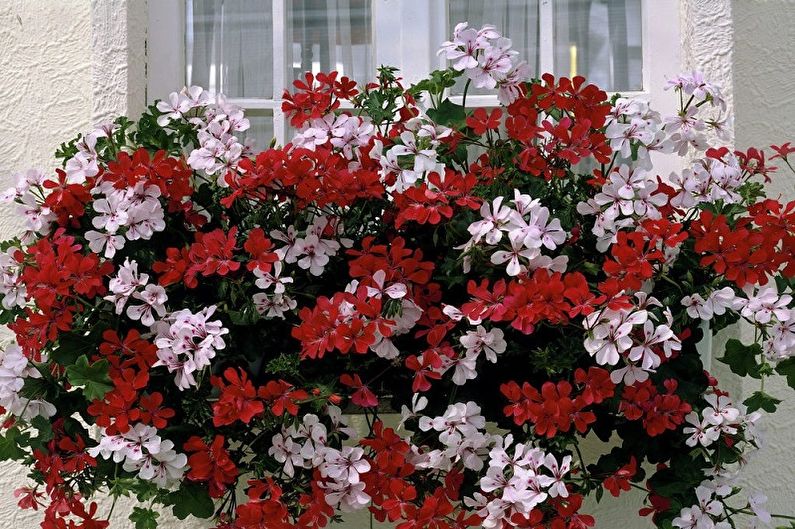
Scented Pelargonium
This is a group of varieties known for their aromas. Most often, they are quite inconspicuous externally, with small pink or white flowers and uneven palmate-lobed leaves. The bushes are loose and branched. Such geraniums are grown not for decoration, but for smell. Leaves can smell like fruits, berries, other herbs, and even complex perfumes.
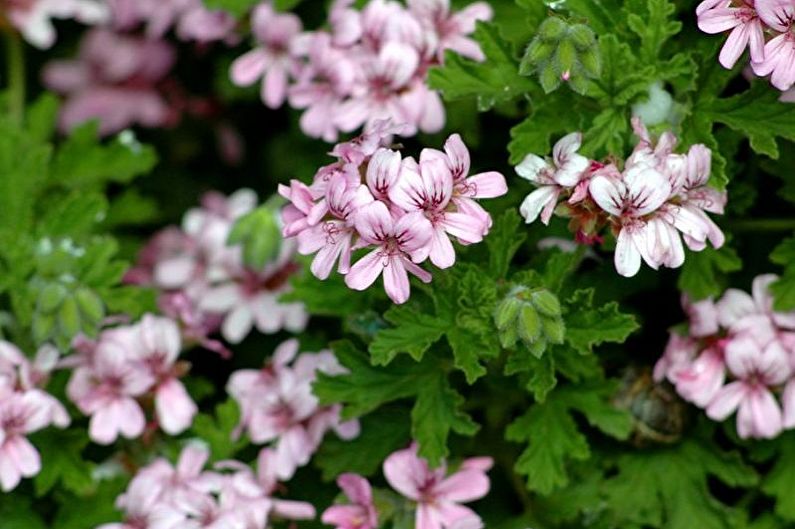
Royal pelargonium
These are powerful bushes up to 50 cm tall. Their feature is large flowers with corrugated or fringed edges. Coloring is heterogeneous due to streaks and spotting. The leaves are wide and serrated, reminiscent of maple.Unlike zonal, which can bloom all year, the flowering of royal pelargonium is limited to 3-4 months.
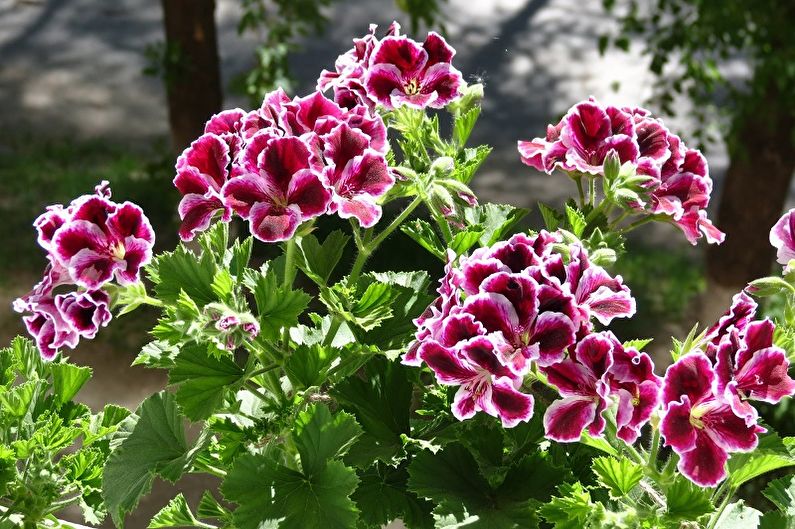
Unique
This is one of the oldest groups, which has been cultivated since the middle of the XVIII century. They brought her out by crossing the royal and brilliant geraniums. The flowers resemble royal ones, but they are smaller in diameter. Dissected leaves have a pronounced smell. "Unique" were especially popular in flower beds in the Victorian era.
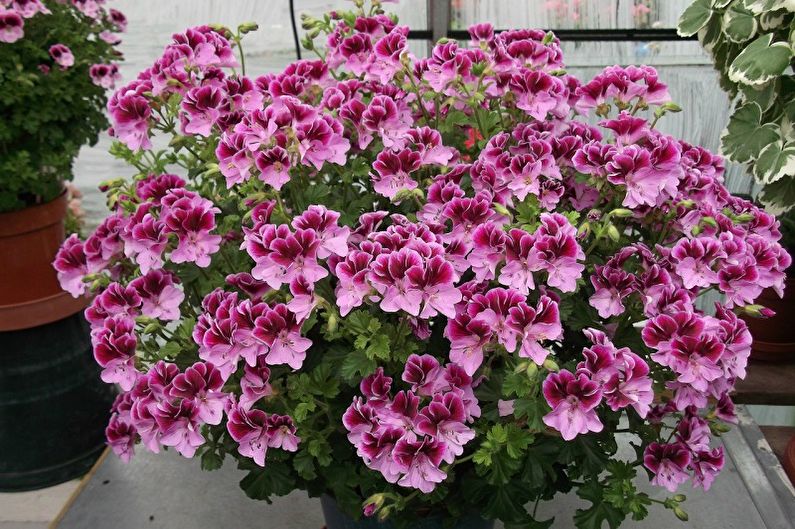
Pelargonium angels
An unusual variety was brought by the English florist Langley Smith, who crossed the royal and curly pelargonium. New species subsequently appeared due to crosses within the group itself.
"Angels" are distinguished by small flowers, leaves and ampelous bushes. Such varieties are less demanding than royal geraniums, but they need more light.
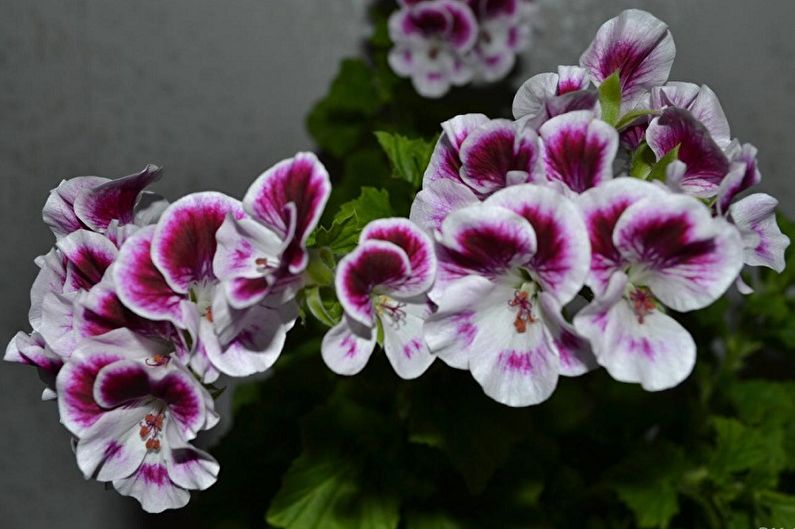
Pelargonium Care
Pelargonium is one of the most unpretentious ornamental plants. But in order for it to bloom beautifully and brightly, you still have to take care of proper care.
In the house, geraniums are placed on a sunny windowsill. Ideally, with a midday shadow so that it does not fade. She loves light and the south side, but disgustingly endures wind and drafts. The first signal of lack of lighting is the gradual exposure of the stem.
The optimum temperature is above + 12C, otherwise the flower will not bloom. If the plant is too cold, the edges of the leaves change color. Most often this manifests itself in the winter. Then it’s better to remove the flowerpot from the window.
Watering is moderate. Due to excess moisture, pelargonium fades and rots, and its root system is damaged. To save such a plant is almost impossible, except to multiply the remaining healthy branches.
In order for geranium to cluster well, in the autumn it is cut and a squat crown is formed. You can do this in early spring, but then cut off only the tips of the longest shoots.
In the summer, geraniums can be planted in open ground. Then propagate the plant in the pre-winter, and in the spring just transplant it into the soil. With the onset of frost, geraniums need to be transplanted back into the pots to save.
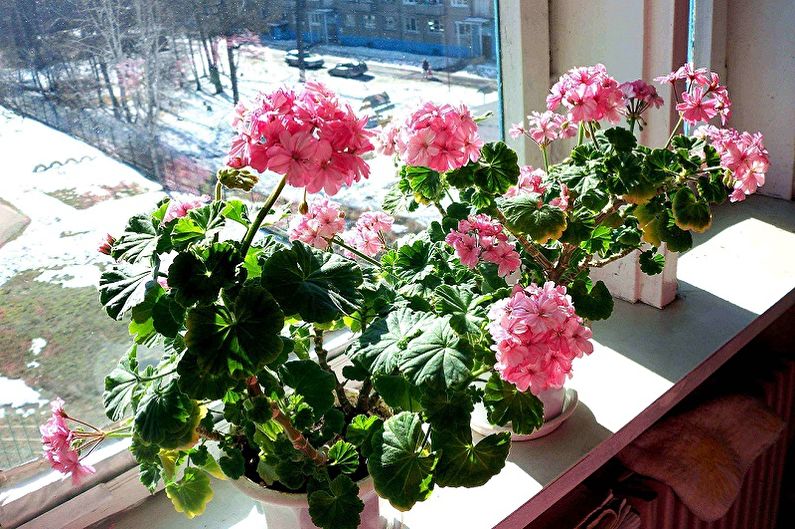
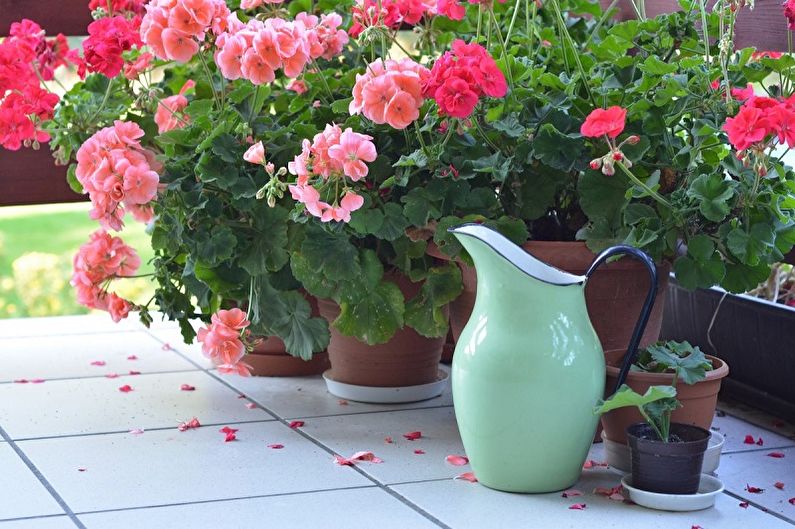
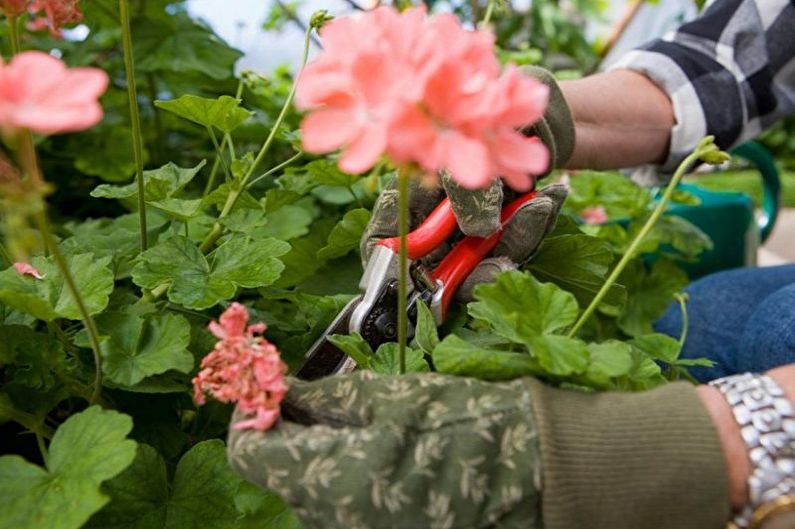
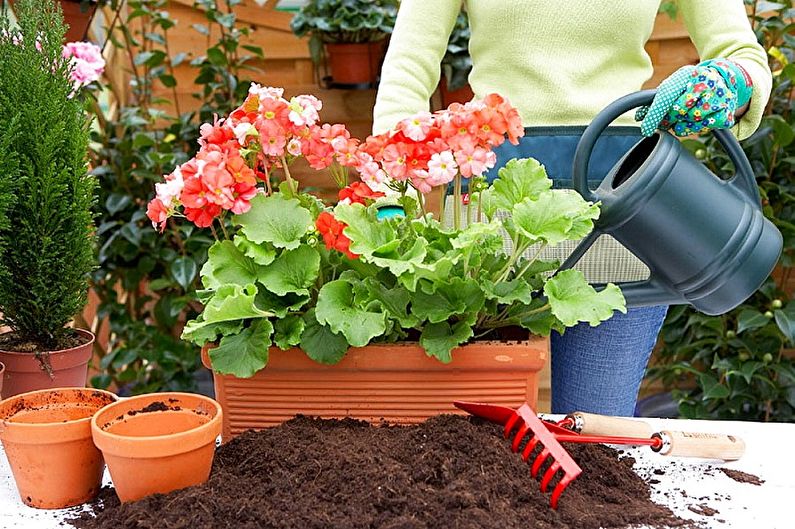
Transplantation and reproduction of pelargonium
The beautiful appearance of pelargonium and its regular flowering depends not only on watering and top dressing, but also on regular pruning. At the same time, a new plant can be grown from the cuttings obtained.
Cutting is recommended not more than once every two years, so that the geranium has time to grow and develop. If the bush is small and weak, then every three years. Cuttings are cut off at any time, including winter. If you do this in early spring, in the summer you can already see the first flowers.
Spring is ideal for reproduction also because at this time all processes of growth and development are especially intense, which means that the stem is rooted faster and stronger. But this is only a recommendation, not a binding rule. Pelargonium tolerates cuttings well in any season. Unless you can admire the first results next year.
For the propagation of pelargonium by cuttings, it is necessary to take into account such nuances:
- For dwarf varieties, the length of the cuttings is up to 2.5 cm, for ordinary ones - 5 cm;
- You can root shoots in water or in the ground. For reliability, use special tools to improve rooting, which are used to process slices, but this is not necessary;
- For planting you will need pots with pallets, a suitable soil mixture and sand;
- Choose the top with three or more leaves;
- It is better not to cut branches with buds that have begun. If there are buds, it is advisable to remove them so that they do not drag resources onto themselves. A young plant will still not allow them to open;
- Cut the cuttings only with a sharpened knife at a right angle. Cut cuttings need to be dried for several hours, so that the cut is tightened with a film. In the future, this will protect against rot;
- Cuttings are planted in drained pots with holes. About a third of the sand is added to the ground;
- To disinfect the soil, it is enough to treat it with boiling water or a weak solution of potassium permanganate;
- Cuttings penetrate the soil a few centimeters. The earth needs to be slightly compacted so that the shoots do not fall;
- The first days, keep the pots in the shade, but by the end of the week they can be transferred to the sun and watered abundantly. Pour water not into the ground, but into a tray;
- Try not to wet the leaves of the pelargonium. Because of this, they can become stained or even rot;
- The average duration of the rooting process of shoots is 2-6 weeks, depending on the variety of geranium;
- If you chose to root the cuttings in water, put them in previously defended water. You can transplant the stems when the roots grow more than 2.5 cm. Plant pelargonium as delicately as possible so as not to damage the rhizome.
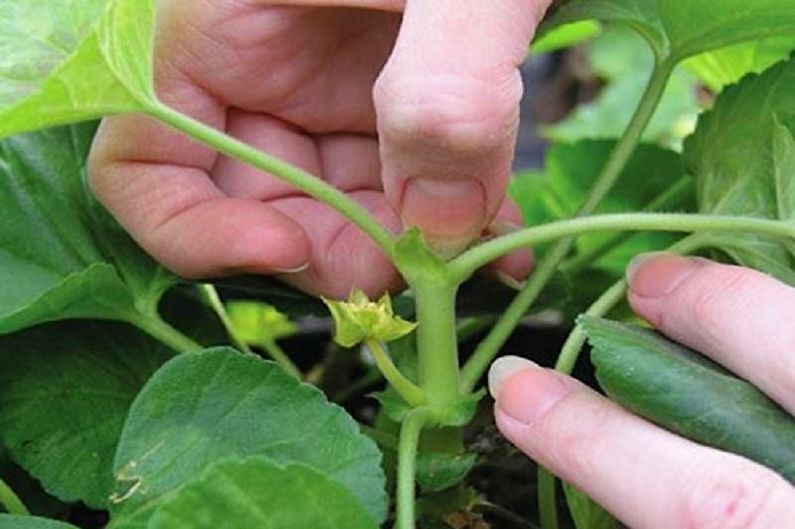
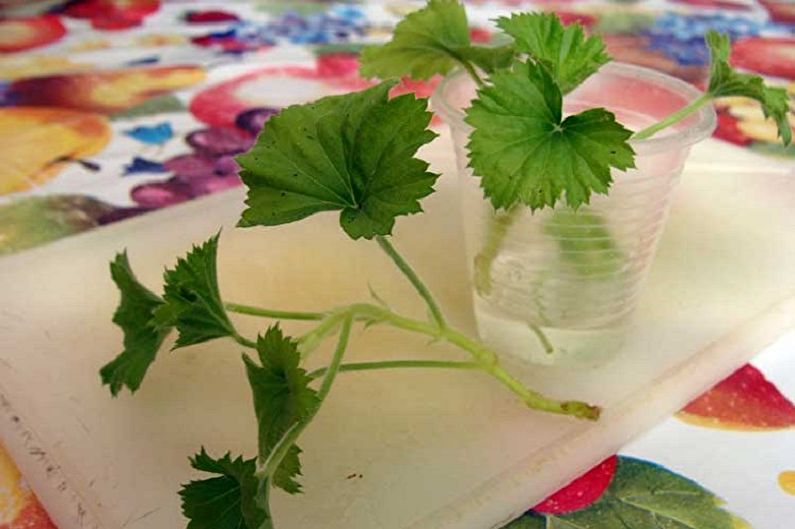
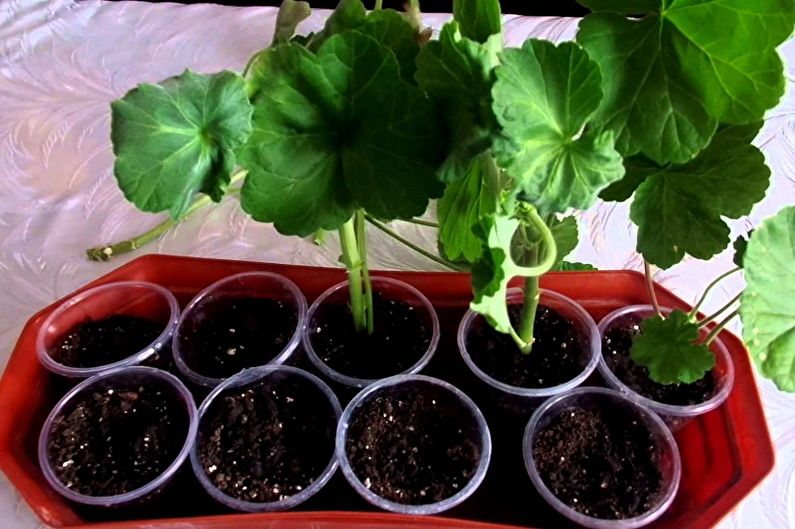
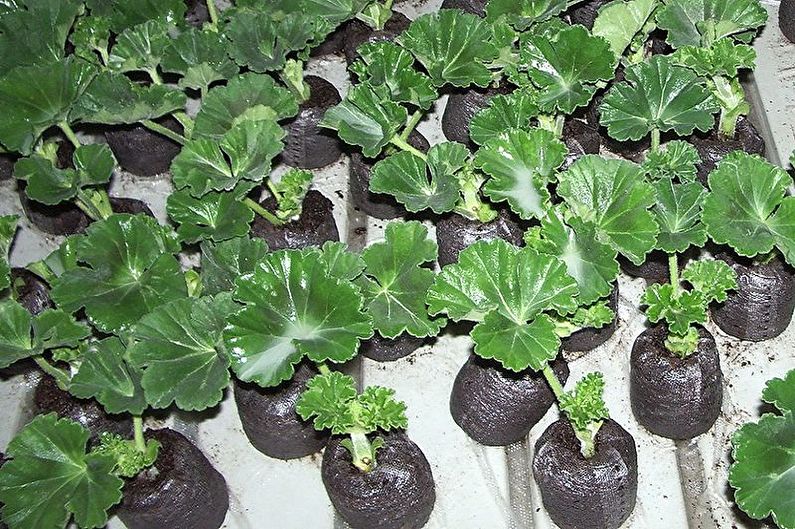
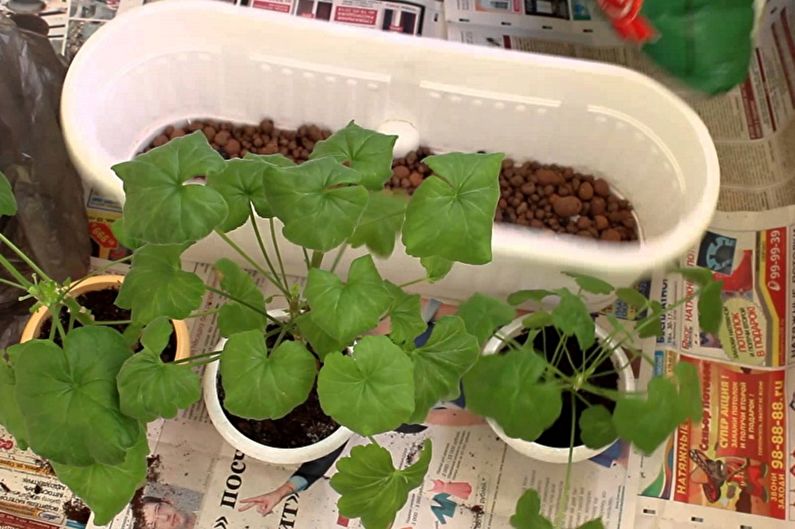
Pest and Disease Control
The most common disease of pelargonium is rotting of the root neck. This can be prevented only by careful monitoring of irrigation and soil moisture.
If grayish mold appears on the leaves, you can still save the plant. Stop watering, remove damaged fragments and dry the soil. Treat the geranium with a fungus and leave it in the sun.
In the garden or in the country you can see a whitefly. These insects hide on the back of the leaf and look like butterflies. They suck juice from the plant and multiply rapidly. Parasites are removed manually, and the flower is treated with insecticides. The same insecticides will help get rid of aphids, another common problem.

Pelargonium (geranium) - photo
We have selected the best selection of photographs for you to understand how pelargonium looks and what its features are. See, compare and choose new favorites for your home green corner or garden seedlings!
